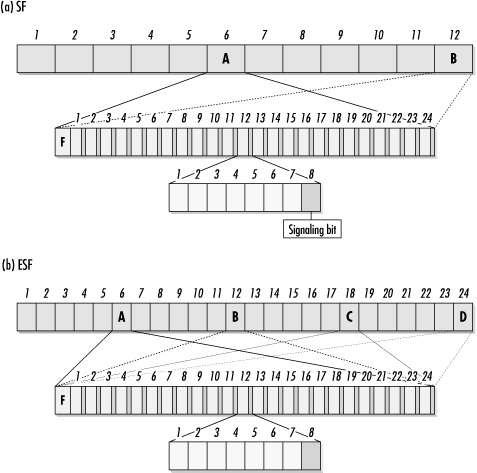On circuit-switched networks, nodes must occasionally send administrative messages to each other to establish, reroute, and tear down circuits. Call-control signaling is incorporated into T1 links by a technique known as bit robbing, illustrated in Figure 4-4. Every sixth frame steals the least-significant bit from each channel to create an auxiliary channel for network messages. When the least-significant bit is altered on a PCM word, the auditory effect on a modulated voice signal is negligible.
Changing bits of data, though, is disastrous. When using robbed-bit signaling on a T1, data communications equipment is usually set to ignore all least-significant bits in case a signaling bit has clobbered a data bit. Ignoring the eighth bit limits the throughput of each channel to 56 kbps. Robbing is an appropriate term indeed, given that available capacity falls from 1.536 Mbps to 1.344 Mbps!
Each robbed bit in a frame is used to create a signaling channel. SF-framed links have two channels, which are called the A channel and the B channel. ESF-framed links have four signaling channels: the A channel, the B channel, the C channel, and the D channel. (The last channel should not be confused with the D channel in ISDN.) Use of the robbed-bit signaling channels is discussed in Appendix A.
Get T1: A Survival Guide now with the O’Reilly learning platform.
O’Reilly members experience books, live events, courses curated by job role, and more from O’Reilly and nearly 200 top publishers.


